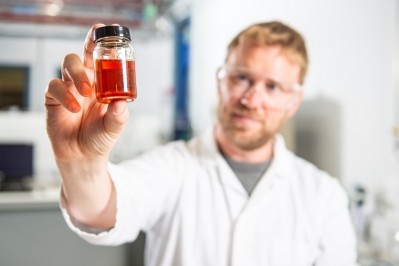Regulating precision fermentation: Challenges and opportunities in marketing microbially-derived foods in Europe

The precision fermentation landscape is somewhat unbalanced. While the US and Europe both boast a growing number of start-ups working to replace conventional animal products with microbially-derived alternatives, the former is ‘way ahead’ of Europe in terms of getting these products to market.
To date, the US Food and Drug Administration (FDA) has sent out four generally regarded as safe (GRAS) ‘no questions’ letters for fermentation-derived products, explained alternative protein regulatory expert Hannah Lester during the recent Future Food Series: Precision Fermentation webinar, co-hosted by ProVeg Incubator and Zintinus.
Lester is CEO and Principal consultant for Amgen Regulatory Consulting, where around 50% of her clients work in precision fermentation. She is also Head of Regulatory Affairs at French cultivated foie gras start-up Gourmey.
“[The US] is really streaking ahead and are by far the leaders in terms of regulations for precision fermentation,” she told delegates.
Why is this the case? And how long should entrepreneurs expect to wait for EU approval?
How Impossible fell into ‘GMO territory’
To offer up an example of different approaches to novel food regulation on both sides of the Atlantic, Lester drew delegates’ attention to Impossible Foods’ precision fermentation-derived heme ingredient.
To develop the ingredient – which Impossible says is responsible for making conventional meat resemble and taste like… well, meat – the company took DNA from soy plants and inserted it into a genetically engineered yeast. This yeast is then fermented to produce animal-free heme.
The Impossible Burger first launched in 2016, having been approved via the US GRAS pathway. In Europe, on the other hand, the company was required to submit a genetically modified organism (GMO) dossier to the European Commission, because its soy leghemoglobin contains host proteins in the final product.
This means, explained the regulatory expert, that the product is not ‘absolutely pure’. Due to the presence of host DNA in the final product, it is classified as a GMO in the EU.
In Europe, therefore, Impossible’s ingredient classified as a Class 3 GMO, rather than a Class 2 GMO. “It’s that distinction that takes you from being a novel food into being a GMO,” she continued.
Impossible submitted its European dossier in 2019. It took around 18 months for the dossier to be validated, and then it was ‘immediately clock stopped’, or paused. The European Food Safety Authority (EFSA) returned to Impossible to request more information. The dossier is still on pause.
This puts Impossible in a ‘tricky’ situation on this side of the pond, suggested Lester. EFSA has suggested the dossier will be taken off pause by the end of 2022, but there are no guarantees. More ‘clock-stops’ can be issued and EFSA’s deadline to complete its risk assessment, pushed back.
For Amgen Regulatory Consulting’s Principal Consultant, there is ‘no doubt’ that Impossible’s product is safe, and that industry is able to prove the safety of precision fermentation-derived products. But, she warned, if they fall into GMO territory, then in Europe it becomes ‘highly political’ and entrepreneurs will have ‘even more of an issue’ obtaining regulatory approval.
How ‘political’ are GMOs in Europe?
At this point, the issue becomes much greater than a positive or negative risk assessment.
If EFSA’s assessment is positive, the EU Member States vote to approve, or reject, the product. Of the 27 countries currently in the EU, approval relies on a 55% majority vote. But that 55% of Member States needs to represent 65% of the EU population.
“So if you’ve got France and Germany saying no, then that’s really going to mess up your approval,” explained Lester.
Europeans are largely much more concerned about genetically engineered food than populations in the US. Several Member States, including France, Germany, Austria, Greece, Hungary, the Netherlands, Latvia, Lithuania, Luxembourg, Bulgaria, Poland, Denmark, Malta, Slovenia, Italy and Croatia have banned the cultivation of GMO crops.
The regulatory expert argues the EU guidance on GMOs, which was issued in 2011, is ‘well overdue’ a ‘massive update’. Ambiguous ‘grey areas’ exist within the guidance which make it ‘really tricky’ for businesses, she continued.
“I think they need to update the guidance and issue much clearer guidance and specifically focus on the complex products that are being produced by precision fermentation whereby there may be host proteins present in the final product, but there is no recombinant DNA in the final product.”
Overall, there is a ‘huge’ amount of work to do, she stressed, in educating the European Commission and speaking to Member State authorities, as well as updating policymakers’ knowledge about this so-called novel field.
What’s in a name?
If approved, how will precision fermentation-derived food products be marketed? How will these novel food ingredients appear on-pack?
In some ways, industry decides. “It is up to the applicant to propose the labelling in their novel food application,” explained Lester.
As always, with labelling, it is paramount that whatever it is called, it does not mislead consumers. Lester suggested ‘non-animal derived beta-lactoglobulin’ for a precision fermentation-derived whey protein, for example, could fit the bill.
‘Microbially-derived beta-lactoglobulin’ could also work, she added. “It’s very clear what the product is, and that it’s not derived from an animal.”
The regulatory expert does not expect applicants will be the only ones wanting to have a say in how precision fermentation-derived products are termed, however. Conventional producers, she told delegates, may well get involved.
“There is going to be opposition about what we call these products,” she stressed. “There may be a battle ahead with the traditional farming stakeholders and more conservative Member States who have their own agenda and want us to call these proteins derived by precision fermentation [something else].”


























